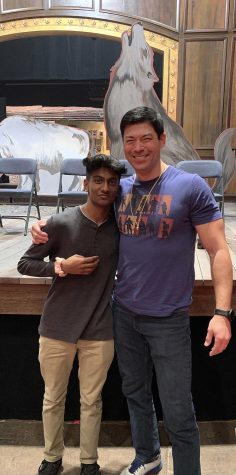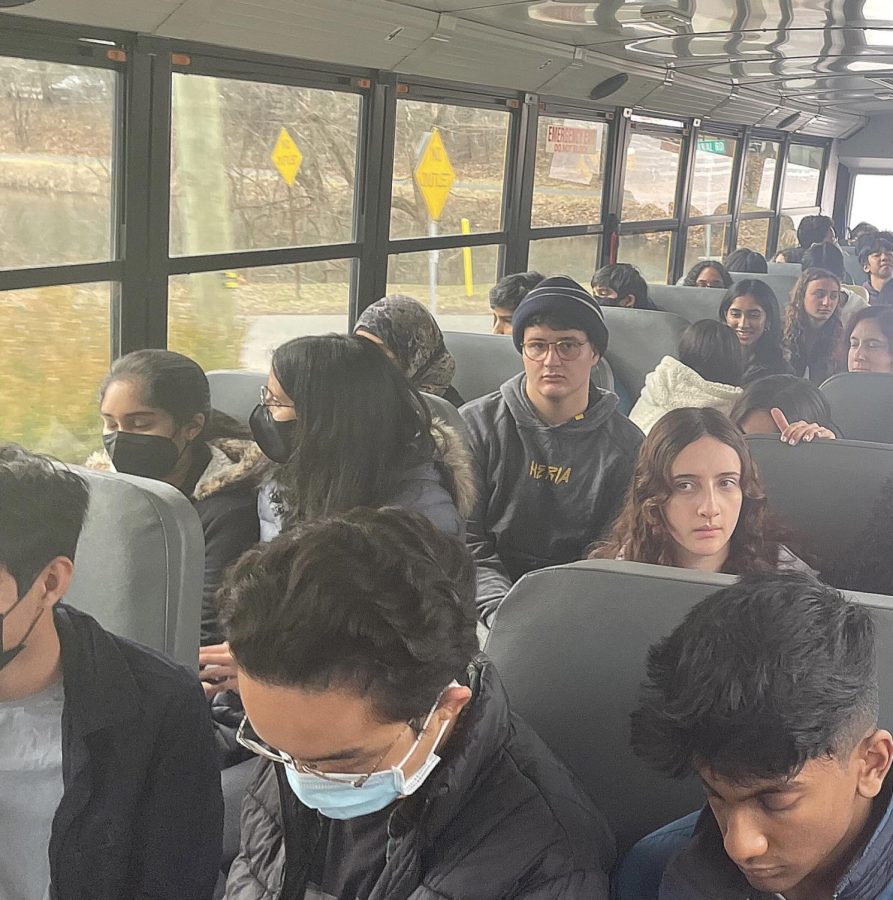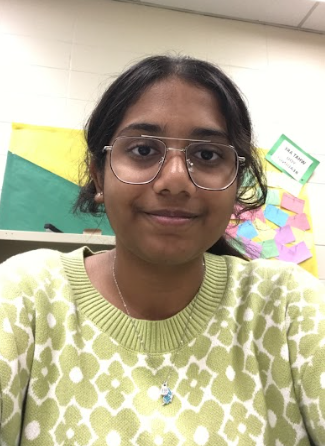‘Between Two Knees’: History and Hilarity
A bus with sophomores that visited the McCarter Theatre during their field trip. (Photo by Nikhil Shankar (‘25))
June 5, 2023
A single shot fired at the Wounded Knee Creek in South Dakota marked the beginning of what most have learned in history class as the end of the conflict between the United States Army and the Western Native American population. But the new McCarter Theatre play “Between Two Knees” has a counter-narrative. The sophomore classes learned this counternarrative of Native American history during their field trip last February to the McCarter Theatre.
Adarsh Rangayyan (‘25), one of the students who attended the field trip, said of the play, “It’s an interesting take on the Native American experience and how colonization has affected them.”
“Between Two Knees” was written by the renowned Native American sketch comedy group The 1491s, known for their work in the shows Rutherford Falls and Reservation Dogs, and directed by Eric Ting. This play follows the journey of five generations of a Native American family that experienced historical massacres and wars.
The play, Aaliya Jamadar (‘25) said,“was informational but in a narrative manner, and it was comedic without being offensive.” .
Ms. Amanda Sayed, the production stage manager of “Between Two Knees,” said the play tackles hard history. “It does it in a hilarious, irreverent way that sort of hits you on the nose. It’s so nuanced, you don’t even know that you’re learning.” Ms. Sayed is of Cherokee descent and a citizen of the Choctaw Nation.
The lighthearted humor woven into the play’s narrative aimed to make audiences more comfortable with hard history like massacres and racism. For example, after the ensemble’s welcoming performance, a “Wheel of Indian Massacres” was introduced in the Prologue,

to tell the history of Native American massacres — such as the Wounded Knee Massacre of 1890. The Wheel of Indian Massacres was a reference to the popular game show Wheel of Fortune.
Ms. Sayed describes the play as: “A train that you can’t get off of, once it starts, it just keeps going and going—faster and faster through this story.”
The play spoke out to not only the younger audience but individuals of all ages. Through props, lighting, dance and ensemble pieces, the story “really showed the generational connections Native Americans had with each other, and how many native stories were interconnected without them even realizing it,” said Jamadar.
Sophomore language Arts students came well prepared for the play, having read or preparing to read Tommy Orange’s “There There,” a book that tackles the intertwined lives of urban Native Americans in Oakland, California. Ms. Sayed said about the challenge of telling Native American history, “I always call it ‘the Tommy Orange effect’ when a show has to explain native history in order to even tell anyone anything. That’s what “Between Two Knees” is–it’s here’s everything you need to know to know anything about Native people.”
The play depicted the lives of Native Americans in an “irreverent, but also important” manner, said Ms. Ellen Glassband, a Language Arts teacher who coordinated the field trip. “I thought it was perfect for this generation who has grown up with satire and understands its power and its effect.”
Ms. Sayed said,, “The show never freezes — it has the sketch comedy improv nature to it.”
The play covers hard history from the Wounded Knee Massacre to the Vietnam War — and the tragedies that followed.
“It got the message across, but in a comedic way, often using a lot of dark humor and sardonic jokes,” said Jamadar.
Shray Sharma (‘25), a theater enthusiast who went on the field trip, said that the play shows “the way most people cope with their trauma —dealing with traumatic events and humor go hand in hand.”
Ms. Sayed said “Between Two Knees” “approaches theater from a decolonized view. We’re sharing with the world who we are as Native people [and] are claiming our time and space.”


